Meet one of the cutest animals in the animal kingdom: the koala. They look like little stuffed teddy bears. But looks are deceiving, and, like all wild animals, they will scratch and bite. And they’re not bears, they’re marsupials. When it comes to sleeping, they have sloths beat. And koalas are tough, feeding on leaves that would kill other animals. Plus their anatomy is surprising.
Read on to learn more about these adorable and fascinating creatures.
Koalas are not bears
Koalas may look like cute teddy bears, but they’re not bears at all, they’re marsupials, like kangaroos. Marsupials have a pouch on their bellies, where their babies stay comfy and protected. Marsupial babies are born not yet fully developed, so their growth continues in the pouch.
Koalas are gentle, calm and independent animals. But during the mating season, the dominant male mates with all available females. Likewise, he brings out his inner “bear” and fights with other males using his sharp claws to show who’s the boss of the territory.
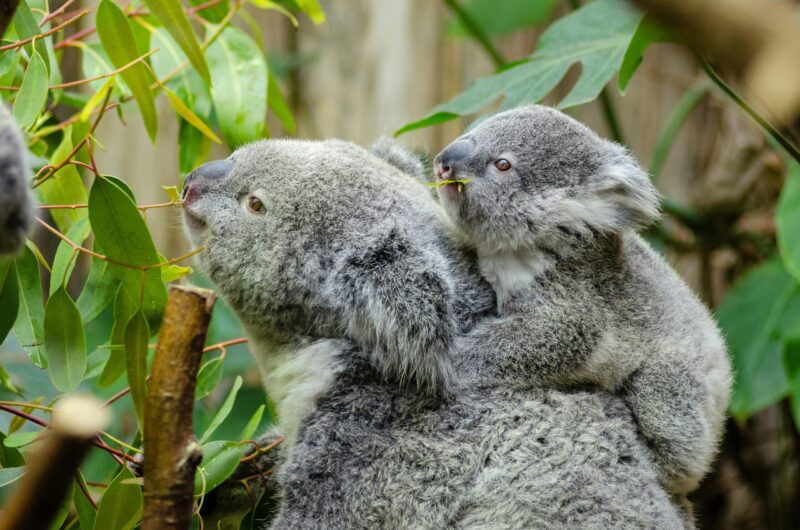
Hi, my name is Joey
Normally, koalas give birth to only one baby per year. Gestation lasts around 35 days. A baby koala is known as a joey. When born, a koala is very small, around 0.8 inches (2 cm) long and 0.02 ounces (0.5 grams) in weight. In addition, koalas are born blind, without ears or hair. But they’re still adorable!
Shortly after birth, the baby crawls into its mother’s pouch and clings to one of the two nipples. Right after, the mother closes the sphincter of the pouch so that the baby doesn’t fall out.
After six or seven months, the young koala takes its head out of its mother’s pouch for the first time. When it gets too big for the pouch, it climbs onto its mother’s back to start eating leaves.
After a year, the koala leaves its mother and looks for its own territory. Koalas have a life expectancy of 13 to 18 years.

Few people know this about koalas …
I bet you didn’t know this … Male koalas have a bifurcated penis, with two ends, and females have two ovaries, two vaginas and two differentiated uteruses. It’s typical of marsupials. What, did I win the bet? Did you know this curious fact?
Although female koalas have only one baby per litter and per year – and sometimes it takes even longer to have a baby again – the double uterus allows them to gestate a baby in one uterus while the other recovers.
There are many animal species in which the female has several babies at once. The second uterus allows females not to be at a disadvantage, so they can have a respectable number of babies even though they gestate them one at a time.
We can see a perfect example in the female kangaroo. When a kangaroo gestates an embryo in a uterus, at birth, the newborn crawls to the pouch to suckle, leaving the uterus free. However, the uterus has not yet recovered from the process, but the other uterus is there, ready to house life.
Therefore, kangaroos can have three babies in their care at the same time: one outside, one in the pouch and another one that is gestating.
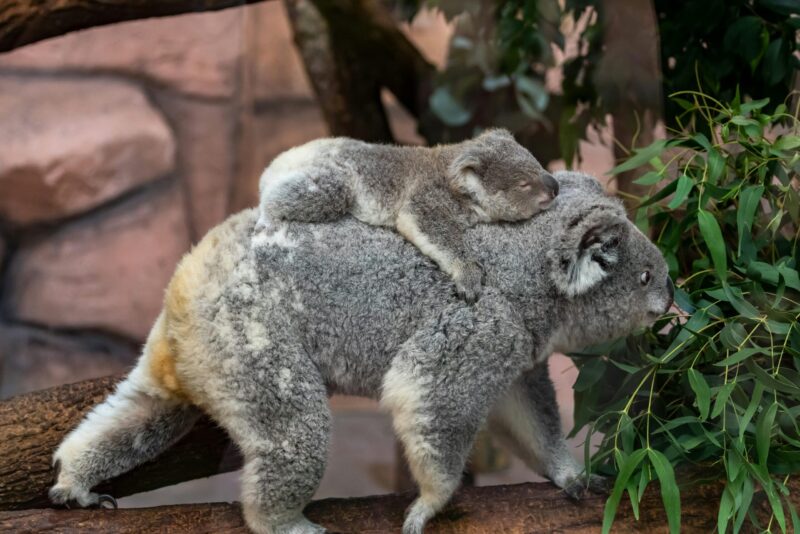
Koalas have a very peculiar anatomy
Koalas are endemic to Australia. There are three subspecies of koalas. The Queensland koala is the smallest of the three. It has shorter and more silver fur. The Victoria koala is the largest and has longer, brown fur. The New South Wales koala is medium-sized and the most recognizable of all koalas due to its gray fur.
Koalas have four legs with five toes on each. So far, everything is normal, but now comes another curious thing … The front legs have five fingers, but the first two are opposite to the rest. These two fingers are like thumbs, which are opposable. This is an adaptation to climb better, since koalas spend their lives among trees.
In the case of the hind limbs, the first toe is short and widened, and the second and third are fused. The other two fingers are ordinary. Additionally, koalas’ fingers have fingerprints, just like humans.
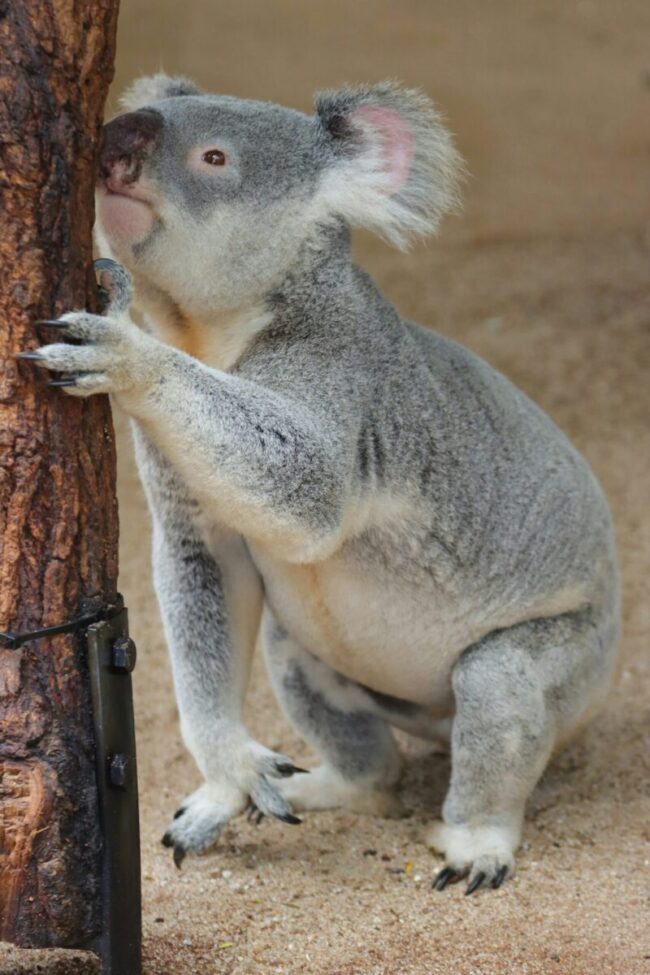
They feed on an element that is toxic to others
Koalas have a good sense of hearing and smell, perhaps to compensate for poor eyesight. However, given the type of life they have, sight is not as important as hearing and smell, which are highly developed.
With hearing, they interact with other members of their species, an especially important sense for reproduction. As for smell, their distinctive nose allows them to perceive and evaluate the peculiar food they consume.
Koalas are herbivorous animals that feed mainly on eucalyptus leaves. Now, these are leaves that contain compounds that are harmful to other animals. However, koalas have developed an anatomical and physiological system that allows them to feed on these leaves without any problem. There is only one small detail to take into account. And that’s the lack of energy this diet produces.
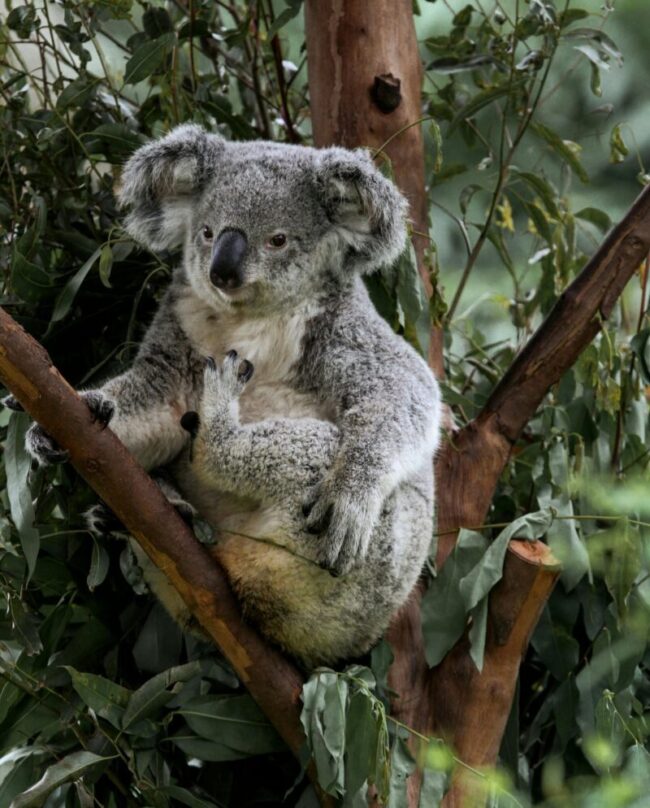
Koalas are lazier than sloths
These furry creatures ingest up to 35 ounces (1 kg) of leaves a day. That’s quite a lot, considering a koala can weigh between 9 and 33 pounds (4 and 15 kg) and its size varies between about 24 and 30 inches (60 and 80 cm). These animals can spend up to five hours a day eating, and although they can eat at any time of the day, they tend to do so at night.
Koalas have a long intestine called the caecum, which is 6.5 feet (2 meters) long. In this caecum, millions of bacteria break down the tough leaves, transforming them into easy-to-absorb substances. This long intestine is very necessary to properly digest the tannins and other toxic substances contained in eucalyptus leaves. Digestion can take five days!
Their diet is high in fiber but low in protein. Thus, with so few nutrients, koalas have little energy. And so they spend long hours sitting or sleeping among tree branches, trying to save the little energy they have.
Still, they are surprisingly fast when needed. Although they are not made to walk or run on the ground, they can gallop and reach up to 19 miles (30 km) per hour.
And if you thought sloths were lazy, koalas sleep between 18 and 22 hours a day. Meanwhile, sloths only sleep between 15 and 18.

Is it true koalas don’t drink water?
The name koala comes from the Australian word “gula,” which means “without water.” For some time, people thought these marsupials didn’t need water to survive. However, it’s not true. Koalas lick the smooth trunks of trees, and although they take much of the water they need from the leaves they consume, they do require liquid water, especially during heat waves.
And speaking of water, koalas are very good swimmers.
Another curious fact is they have a small brain in relation to the size of their head and body. In addition, this structure is also smoother. Scientists think if they had a larger and more complex brain, they would require more energy. But we love them anyway, don’t we?
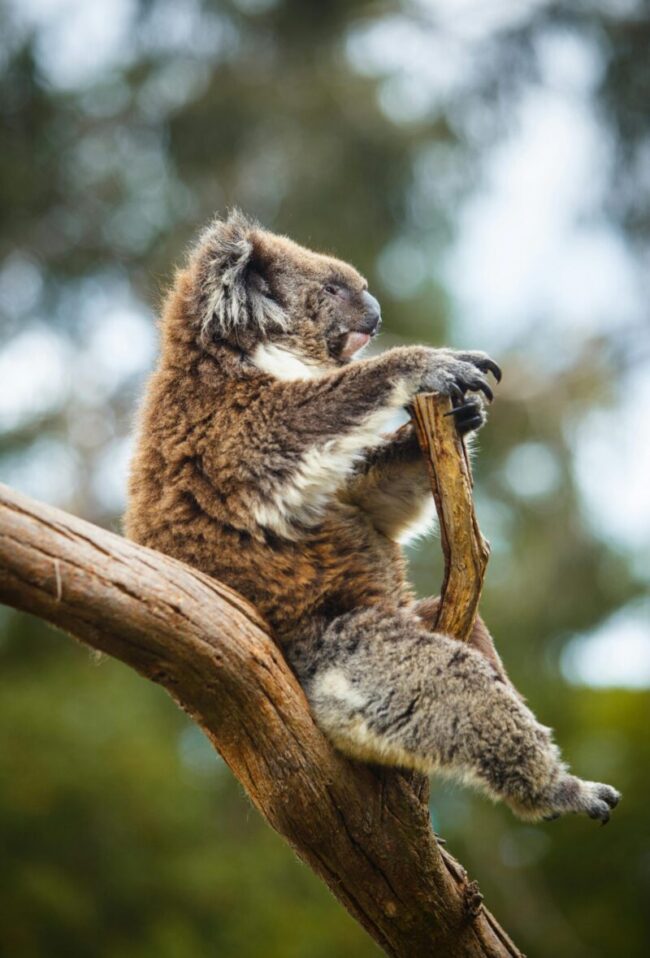
Difficulties they face
Unfortunately, many koalas suffer from chlamydia. It’s a bacterial infection that can cause disease. When koalas become stressed due to changes in their habitat, their immune system becomes depressed. Then the bacterial infection can cause damage that results in blindness and infertility.
Logging, agriculture and urban development have added other dangers. Their habitat has been affected by the passage of many roads, resulting in deaths by automobiles.
Koalas only live in Australia. Although not officially classified as endangered, the koala population has declined by 90% in less than a decade.
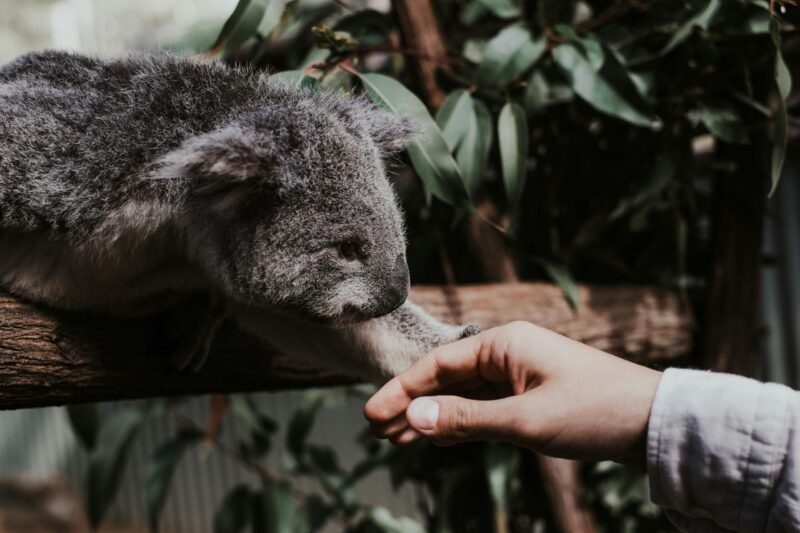
Sleeping cuties
All right, because I know how much you love seeing photos of these adorable animals doing what they do best, to sleep, here are some more images. By the way! Even if it looks like they are not comfortable, they have a curved spine and a cartilaginous pad over the end of the spine that makes it more comfortable for them to sit on branches and tree forks.

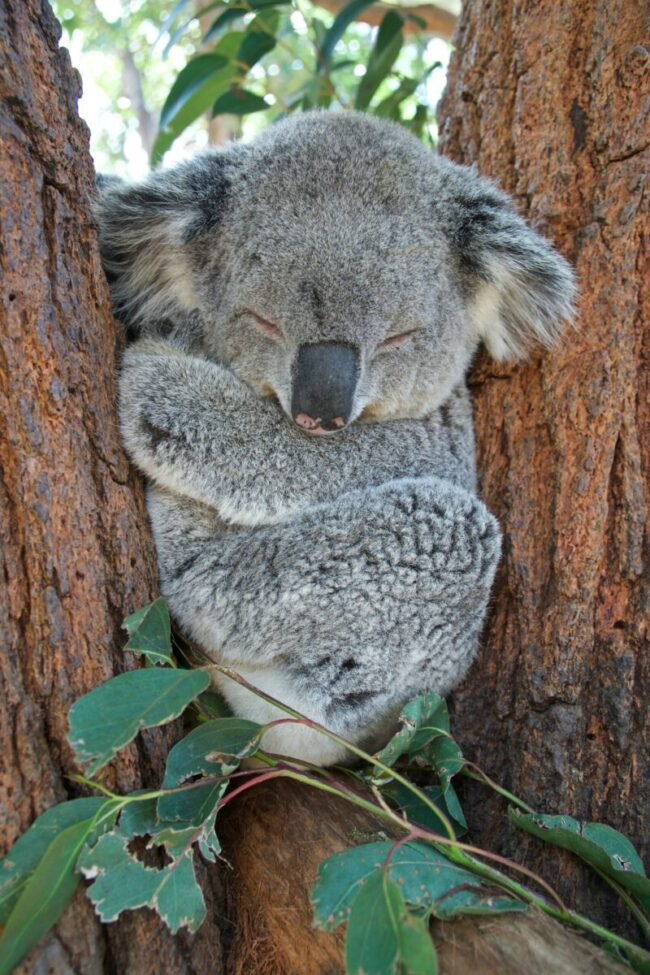
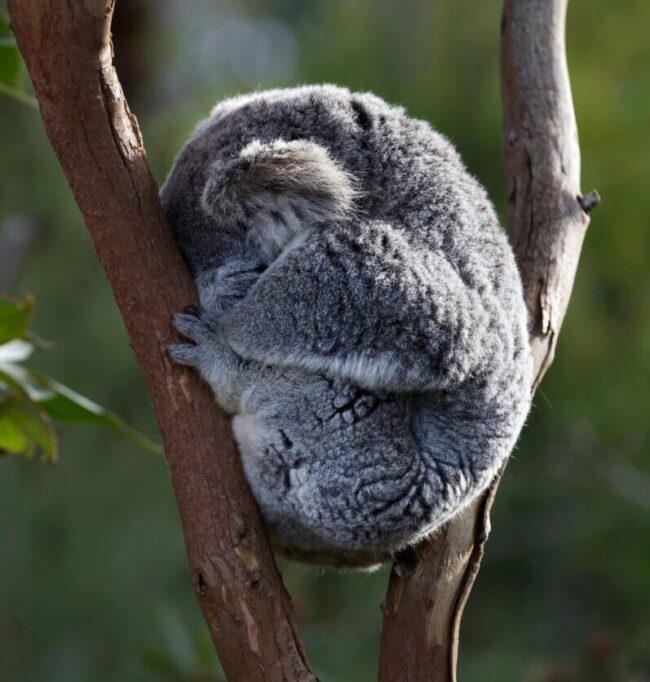
Bottom line: Koalas look like little toy teddy bears, but they are quite tough! They can eat leaves that would kill other animals. And their anatomy is surprising.











